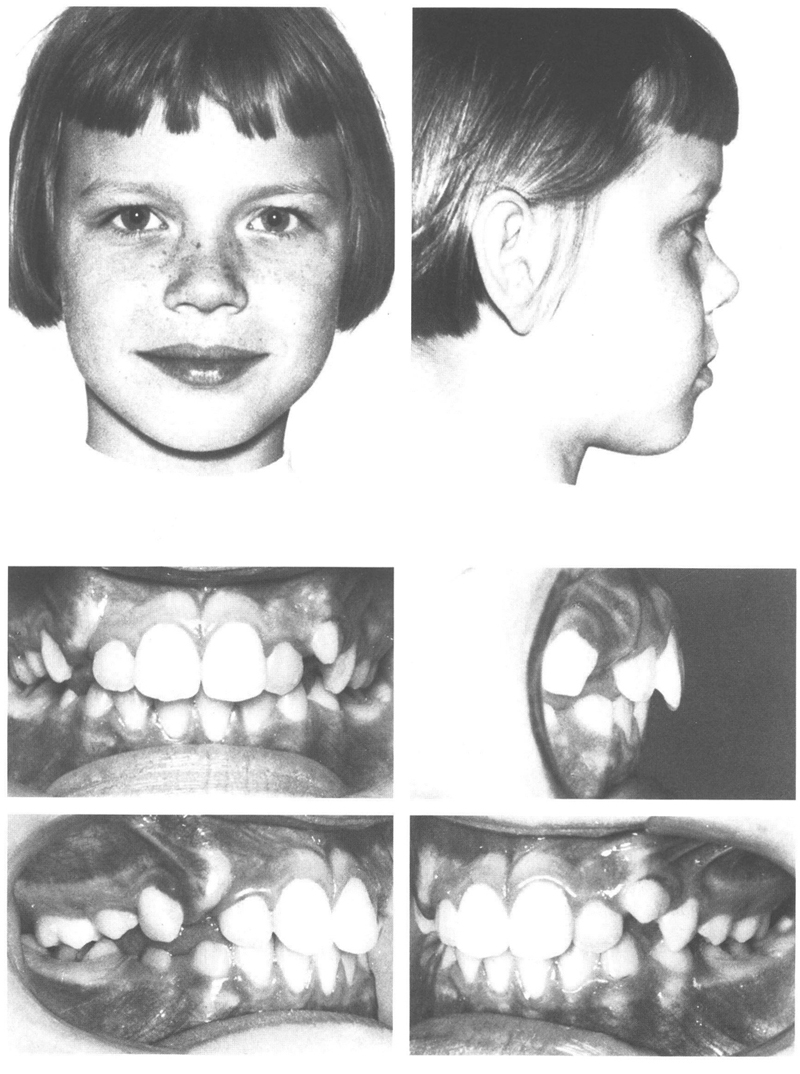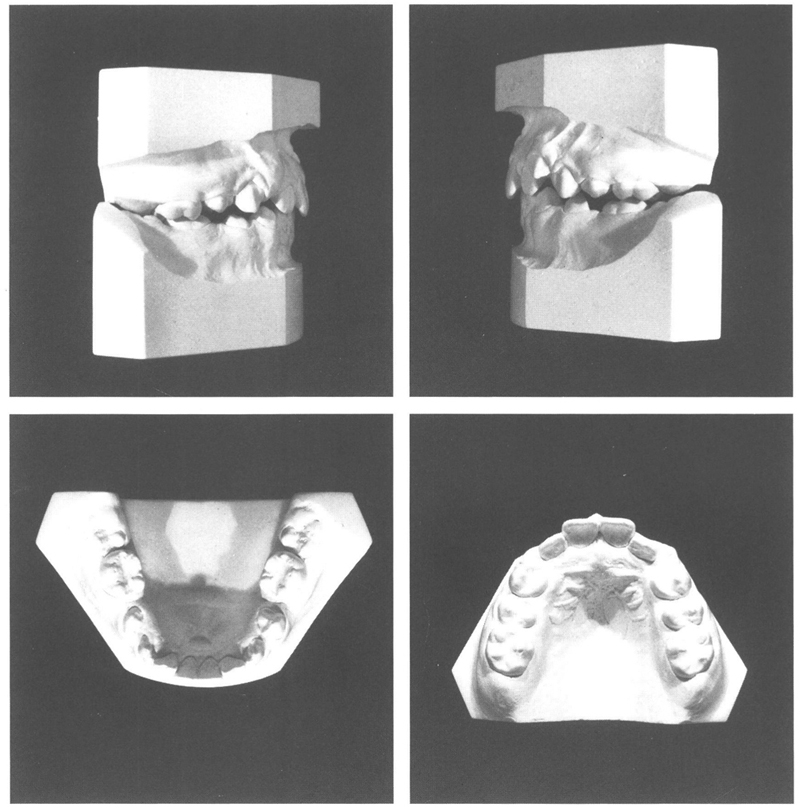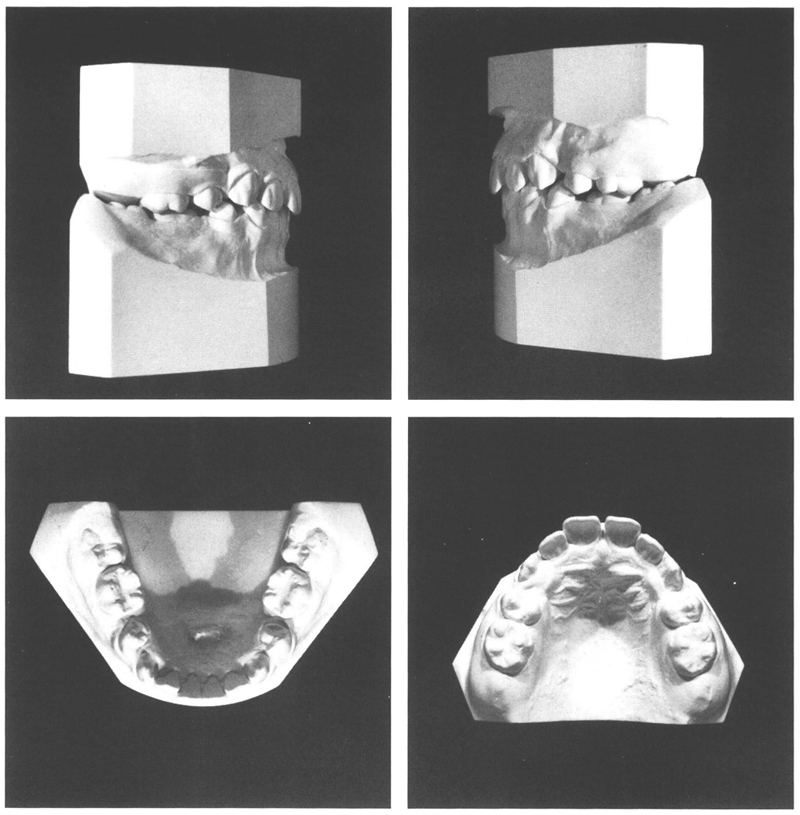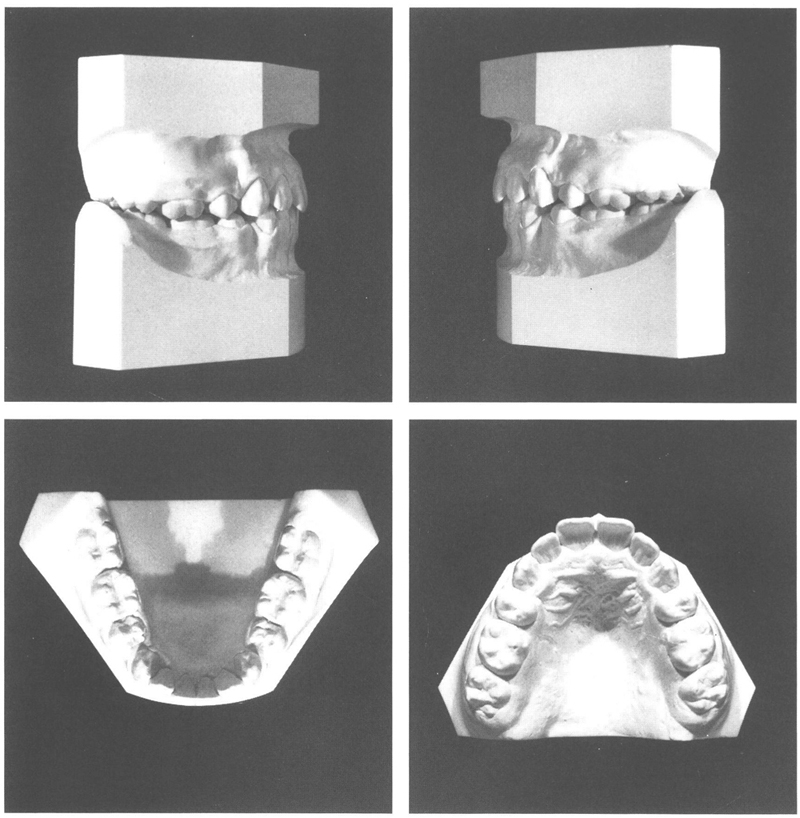Class I, marked crowding in both dental arches
Extraction of four first premolars, no appliances
Female: 10 years, 0 months to 32 years, 6 months
A girl aged just 10 years, exhibiting neutro-occlusion and neutro-relation, had severe crowding in the canine-premolar regions of all quadrants. She had a round face and a mild degree of double protrusion, which meant that her mouth was situated somewhat ventrally relative to the rest of her face. All first premolars and permanent canines except that on the upper right had emerged. In the mandible, the space for the second premolars had almost completely vanished due to the premature loss of their predecessors. It was thought from the evidence of radiographs that the crowns of these premolars were hypoplastic (Fig 5.14). In the maxilla, the permanent left canine had emerged outside the dental arch and that on the right was likely to do the same. In the mandibular arch an arch length discrepancy (ALD) of —12 mm had been measured, with one of -7 mm in the maxillary arch. The midline of the mandibular arch was displaced 2 mm to the right of that of the maxilla: the overjet was 4 mm (Figs 5.1 and 5.2).


Fig 5-1 and 5-2 A girl aged 10 y, 0 mo, with class I anomaly and marked crowding. In the mandible, the crowding is in the regions of the second premolars; in the maxilla in the canine regions. Premature loss of the deciduous molars in the mandible had led to mesial migration and tipping of the first permanent molars and early emergence of the second ones. There is insufficient room for the maxillary second molars; the posterior section of the apical area is still too small for them.31
In view of the crowding in the canine-premolar regions combined with the mild double protrusion, it seemed obvious to remove a premolar from each quadrant. In the maxilla, the choice of extraction was influenced by the marked mesial angulation of the permanent canines. It could be expected that after extraction of the first premolars, the canines would spontaneously upright to distal.
The assumed inferior quality of the mandibular second premolars and the fact that the first premolars in that region had emerged favorably seemed to call for the sacrifice of the as yet unerupted second premolars. Against this was the fact that the crowns of the first premolars were small and not of optimal functional shape. Therefore extraction of the first premolars in the mandible also was preferred, bearing in mind too that the surgical removal of the second premolars could lead to a permanently undesirable effect on the bone support of the adjacent teeth. Although there was only a slight chance that the second premolars might not erupt further, it was decided to monitor this aspect by obtaining radiographs at a later stage. It was hoped that the eruption of the second premolars would lead to uprighting of the mandibular first permanent molars.
At the age of 10 years 1 month, both maxillary first premolars were extracted. Eight months later, when it was established radiographically that the mandibular second premolars had erupted further, the mandibular first premolars were removed. Subsequently the development of the dentition proceeded very well (Figs 5.3 to 5.8 and 5.14).

Fig 5-3 At the age of 10 y, 5 mo, four months after extraction of the maxillary first premolars, the canines in the maxilla have gone distally and palatally; they have almost filled the extraction spaces. The first premolars in the mandible were extracted at the age of 10 y, 9 mo, when it was seen that the mandibular second premolars continued to erupt.

Fig 5-4 At 11 y, 1 mo, the maxillary second permanent molars have emerged and the canines are in good alignment. In the mandible, the removal of the first premolars has provided sufficient room for the second premolars to emerge.
Stay updated, free dental videos. Join our Telegram channel

VIDEdental - Online dental courses



